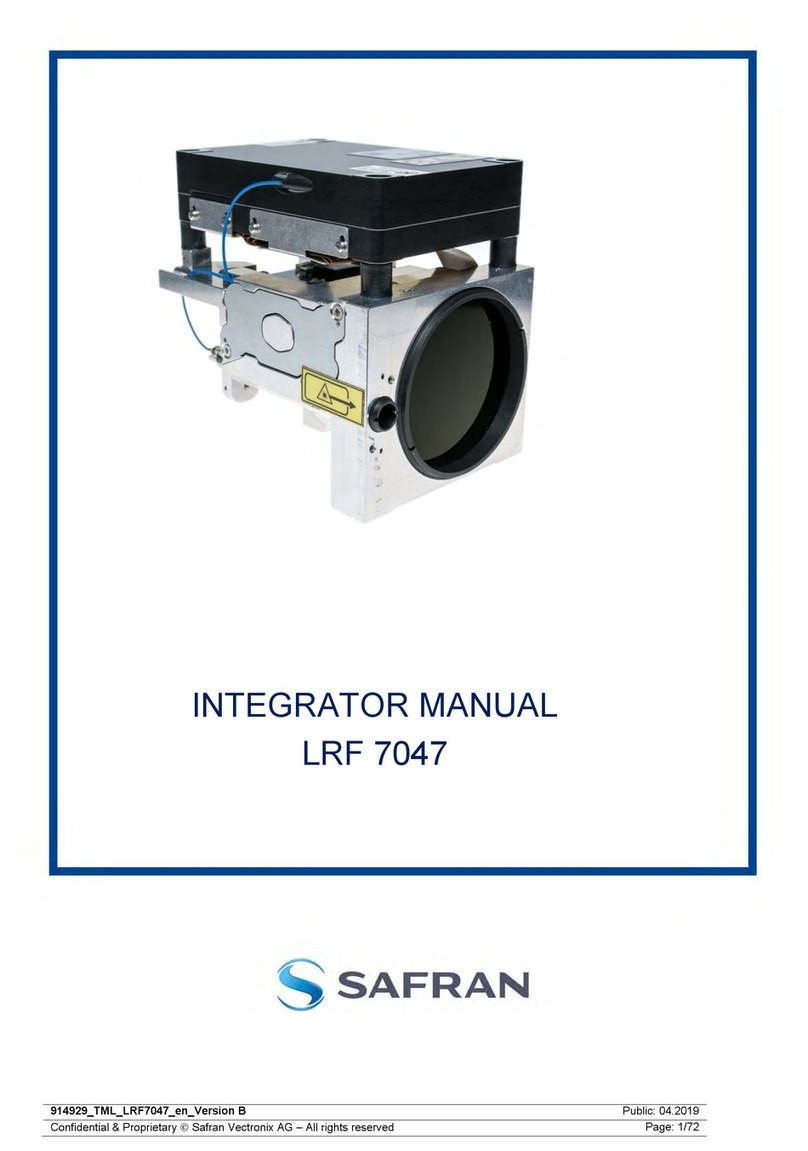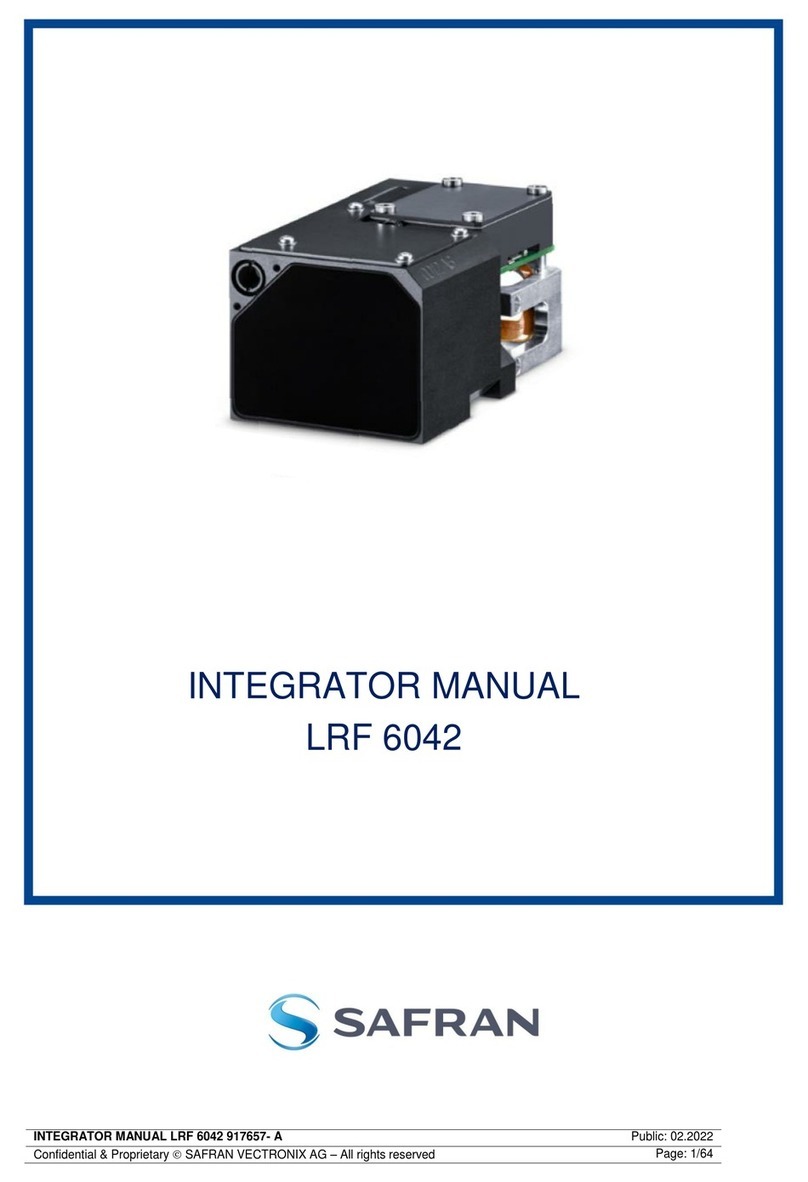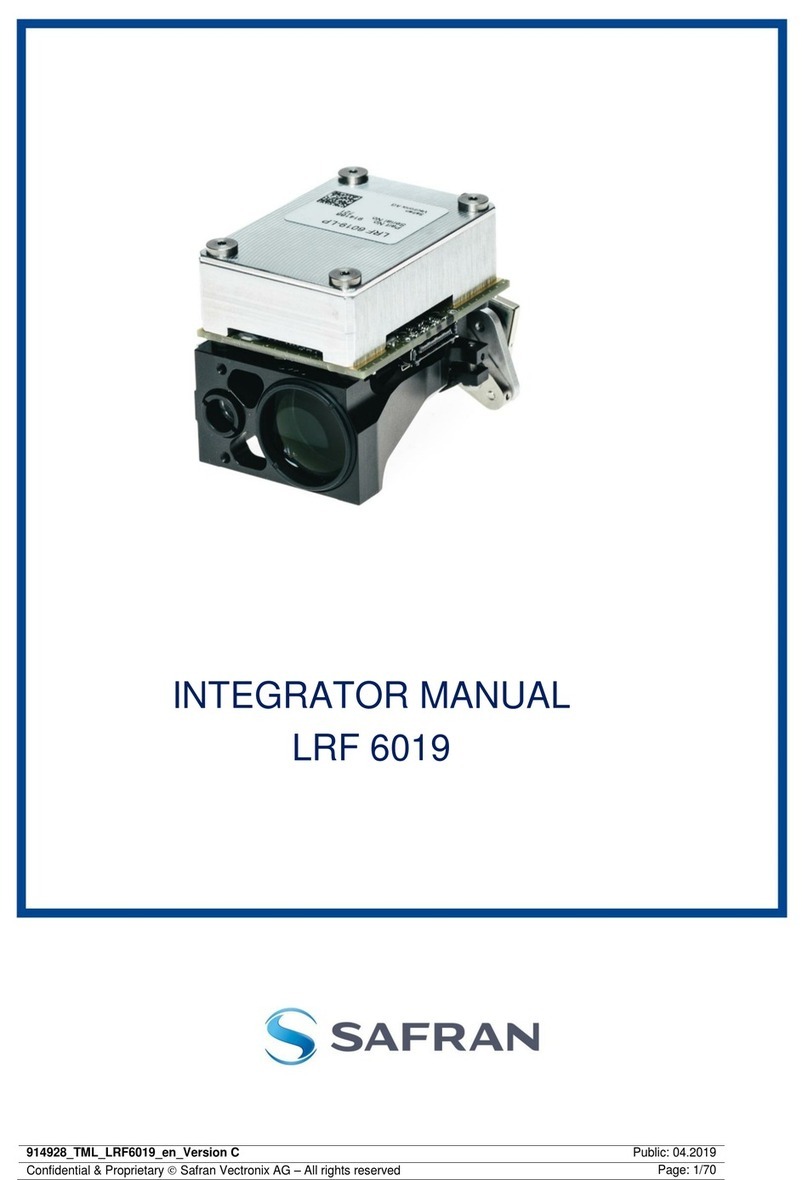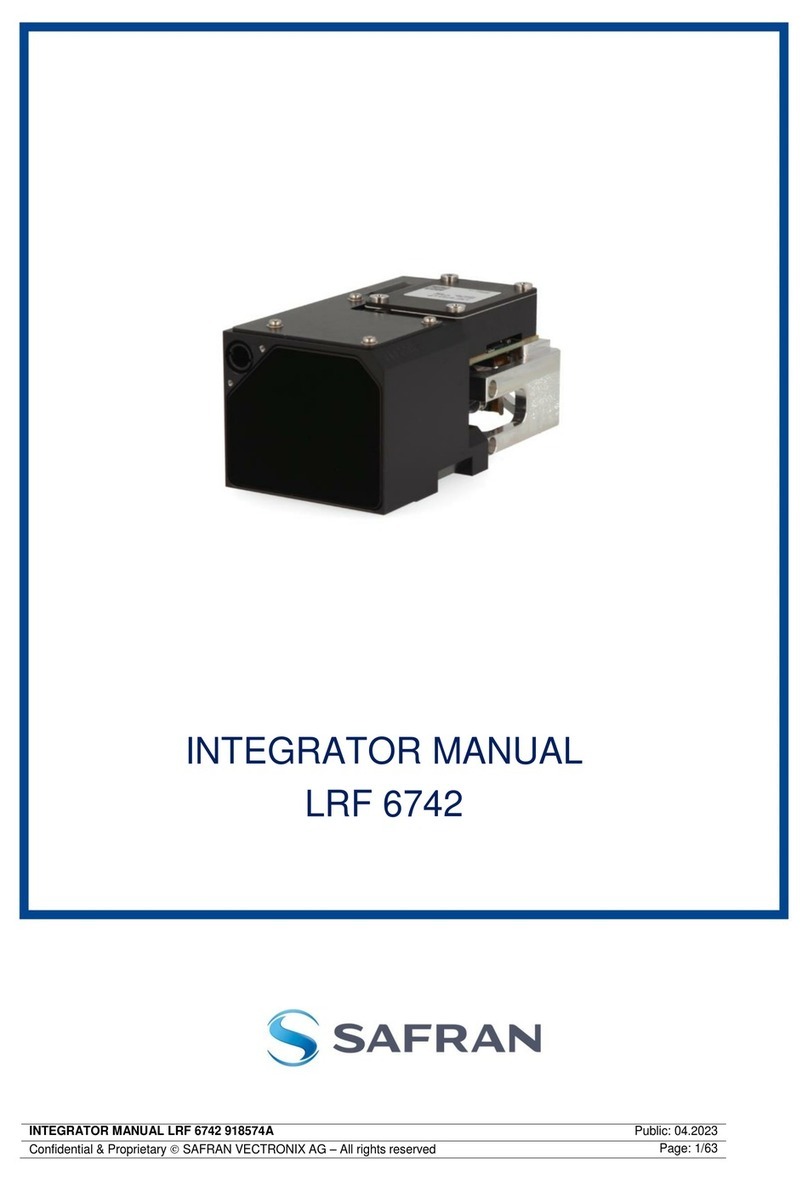
LRF 3013 Integrator Manual
Document number: TML 913655 ver A
Confidential & Proprietary Safran Vectronix AG –All rights reserved
Contents
Disclaimer................................................................................................................................. 2
Safety Notices.......................................................................................................................... 3
1General............................................................................................................................... 7
1.1 Main Elements and functions of the LRF Module...........................................................................7
1.1.1 Main parts ................................................................................................................................7
1.1.2 Interface parts..........................................................................................................................8
2LRF Background Information........................................................................................... 8
2.1 Rangefinder Principle......................................................................................................................8
2.1.1The “Pulsed Diode” ..................................................................................................................8
2.1.2 Electronics................................................................................................................................9
2.1.3 Ranging Conditions..................................................................................................................9
3Getting Started .................................................................................................................11
3.1 First steps with the LRF Interface Kit........................................................................................... 11
3.2 Using the Safran Vectronix Terminal Software............................................................................ 14
3.3 First steps without LRF Interface Kit............................................................................................ 16
3.4 Checklist in case of problems with LRF modules ........................................................................ 16
4Integration.........................................................................................................................17
4.1 Mechanical Mounting & Handling................................................................................................. 17
4.2 Design recommendations ............................................................................................................ 17
4.2.1 Preparation............................................................................................................................ 17
4.2.2 Mounting ............................................................................................................................... 17
4.2.3 Boresighting.......................................................................................................................... 18
4.2.4 Nitrogen flushing................................................................................................................... 19
4.3 Front Protection............................................................................................................................ 19
4.4 Eye Safety.................................................................................................................................... 20
5HW Interface .....................................................................................................................21
5.1 System Connector and Signal Description .................................................................................. 21
5.2 Power Supply & Timing................................................................................................................ 22
5.3 Serial Interface: UART ................................................................................................................. 24
5.4 Ground Concept........................................................................................................................... 24
6SW Interface......................................................................................................................25
6.1 Communication Protocol.............................................................................................................. 25
6.1.1 Command structure .............................................................................................................. 25
6.1.2ACK and NACK..................................................................................................................... 26
6.1.3 Timing constraints................................................................................................................. 26
6.2 Operational Commands ............................................................................................................... 26
6.2.1Distance measurement......................................................................................................... 26
6.2.2 Continuous distance measurement ...................................................................................... 27
6.2.3 Software versions, hardware configuration and serial number............................................. 28
6.2.4 Built-In Self Test.................................................................................................................... 29































